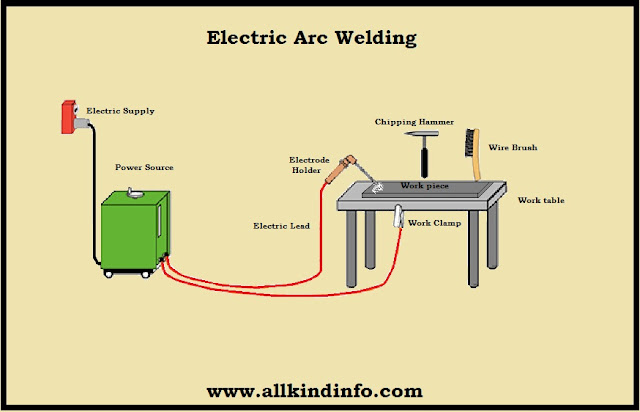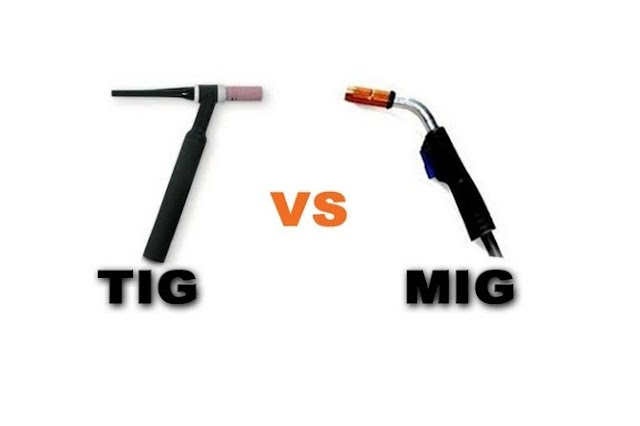The arc welding is a type of fusion welding process in which the welding warmth is acquired from an electric curve struck between the work(or base metal) and a electrode. The temperature of the warmth created by the electric arc is near to 6000°C to 7000°C. Both the direct current (D.C) and alternate current(A.C) might be utilized for this welding, however the alternate current is favored for generally purposes.At the point when the work is associated with the positive terminal of the D.C welding machine and the negative terminal to a electrode holder, the welding set up is said to have straight polarity. Then again, when work is associated with negative and the electrode to a positive terminal, then the welding set up is said to have reversed polarity . The straight polarity is ideal for a few welds while for different welds turned around reversed polarity ought to be utilized.
Following are the two types of arc welding depending upon the type of electrode:
1: Shield Arc Welding
When the electrode rods with covering material of fluxing are used, this type will be called shield arc welding.
2: Non Shield Arc Welding
When a filler rod or electrode is used for welding, this method is called non shield arc welding.
Arc Welding Processes
Various types of arc welding processes are commonly used in the workshop,there are as follows.
(i) Metal Arc Welding
The arc is produced between the metal and the work piece Metal electrode is melted through heat and joined the work piece. The temperature produced is upto 2700 degree centi grade.
(ii) Carbon Arc Welding.
In carbon arc welding, the welding heat is acquired from an electric arc between a carbon electrode and the work piece. In welding substantial plants, the extra metal is stored in the weld from a filler rod.
(iii) Metallic inert gas (MIG) arc welding
In MIG arc welding ,the electrode is consumable, the filler metal is saved by the arc which is totally encompassed by a inert gas.
(iv) Tungsten inert gas (TIG) arc welding
In TIG arc welding, the warmth is created from an arc segment between the non consumable tungsten electrode and the work piece. The welding zone is protected by an air of inert gas(such as helium or argon) supplied from a suitable source. The direct current with a straight extremity is utilized for welding copper composites and stainless steel. Though the turned around extremity is utilized for magnesium. The alternative current is more adaptable in welding for steel, cast iron, aluminum and magnesium.
(v) Thermit Welding
In this welding, a blend of iron oxide and aluminum known as thermit, is utilized. The blend is touched off just at a temperature of around 1500°C. A noteworthy point of interest of the thermit welding is that all parts of the weld area are molten in the meantime and the weld cools consistently.This outcomes in a base issue with internal residual stresses. The thermit welding is frequently utilized as a part of joining iron and steel parts that are too expansive to ever be produced, for example, rails, trucks outlines, train outlines, other extensive areas utilized on steam and rail streets, for stern casings, elastic edges and so forth. In steel plants. Thermit electric welding is utilized to replace broken rigging teeth, to weld new necks on rolls and pinions and to repair broken shears.
(vi) Submerged Arc Welding
This type of welding is used for low carbon and alloy steel metals, but in many cases it can also be used in non ferrous metals welding.
(vii) Stud Arc Welding
It is a direct current arc welding process, and is used for welding metal studs to the flat metal surfaces.
(viii) Atomic Hydrogen Welding
In this welding , two tungsten electrodes (non consumables) with a stream of hydrogen passes by arc and create a welding zone.






Post a Comment
The reason you want to choose the correct machine depends on your specific needs.While there is many TIG Welders available, there are some that work better with certain metals than others. Source to know more about best tig welder.